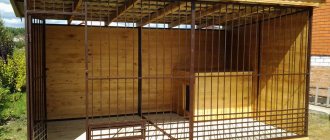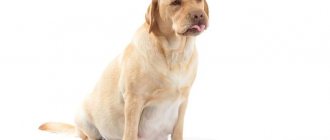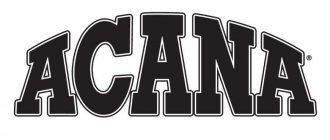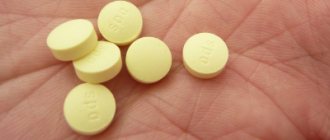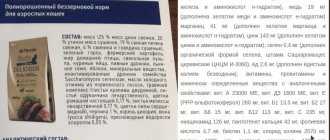Are you susceptible to illness?
Pugs are a rather sick breed of dog; the diseases of these animals are very diverse.
IMPORTANT!
The most common disease is allergies, which can have different origins.
Also among the diseases quite common are obesity , breathing problems and eye disease, and colds .
Pathologies of the motor system, sores on the head and gastrointestinal disorders are also characteristic of the pug breed.
Pug - features of care and nutrition
Pugs are small, unpretentious animals, ideal for keeping in apartment conditions.
But it is important to follow some rules for their maintenance, non-compliance with which leads to illness in the pet. Firstly, pugs should not be fed more than three times a day, and puppies - more than four, since this breed has a sensitive digestive tract and a tendency to obesity. Secondly, you should follow the feeding schedule, that is, feed at the same time. Thirdly, the feeding area, bowls, and floor must be kept perfectly clean, otherwise the animal is at risk of contracting infections. In addition, pugs shed heavily; during the shedding period, try to comb and remove the fur as often as possible, since its entry into the stomach contributes to the development of intestinal disorders and vomiting. As for food, they should not eat fatty foods, smoked meats, cheeses, sausages, pastries, sweets, mayonnaise, or seasonings. For food, lean meat, boiled or stewed vegetables, cottage cheese with a low fat content, fruits, cereals or special dry food are recommended. It is important to know that pugs are susceptible to allergic diseases, especially seasonal ones. If signs such as redness, sneezing, tearing, or upset stools appear, you should take him to the veterinarian. It is also important to protect pugs from drafts and severe frosts, as they are prone to colds and viral diseases.
The most common diseases
Typical diseases common among pugs are:
- Gastrointestinal dysfunction in a pug. Diarrhea in a pug can occur either as a result of a serious illness or poisoning from low-quality products. If a dog is vomiting and has diarrhea, then it must be constantly watered; the pet may refuse to drink on its own, in which case it must be given water from a syringe. Only a veterinarian will be able to accurately determine the cause of unpleasant symptoms, prescribe treatment and select a diet for the dog.
- Pugs have a unique and unusual skull structure, which is why they differ from other dog breeds in that their eyes fall out. With this pathology, pugs’ visual organs bulge greatly and turn red. In order to correct the situation, human intervention is necessary, since the animal will not be able to cope with the problem that has arisen. However, it is important to remember that under no circumstances should you try to correct the situation yourself; this should only be done by a specialist. If such a situation arises, it is necessary to bandage the eyes with gauze soaked in saline or salted water, and in this condition, take the dog to the doctor.
- There are also pathologies that are quite common among pug dogs - inflammation of the cornea and chronic inflammation of the organs of vision. Keratitis is characterized by redness and then clouding of the cornea. At a later stage, the animal’s eyes begin to water and fester; over time, the dog loses the ability to open the diseased eye. If the disease is not treated and everything is left to chance, then this threatens with the most severe consequences, that is, removal of the eye.
- Pigmentary keratitis or chronic inflammation of the cornea is characterized by the accumulation of melanin pigment in the epithelium of the visual organs. The cause of the development of this pathology is chronic irritation of the cornea of the eye. Visually, the pathology manifests itself in pigment spots on the eyes. With pigmentary keratitis, the dog may partially lose vision or become completely blind.
- Ears are another problem for Pugs. The most common ear pathology among pugs is otitis media, in which the inside of the ear becomes inflamed and red. Often the disease can be confused with an allergy, since the signs of the diseases are the same. But with otitis media, the following symptoms also appear: increased secretion of sulfur, accumulation of fluid in the ears, odor from the ears. Peeling and itching may indicate allergies.
The most common diseases of pugs, such as diseases of the ears, eyes, malfunctions of the gastrointestinal tract, as well as injury to pets, occur in most cases due to the fault of the owners. Many pug owners, when purchasing an animal, do not know how to properly care for it in order to prevent the development of pathologies that arise in the physiological anatomy of the pet. Very often, the hygiene of the animal is carried out incorrectly, as a result of which diseases of the eyes, ears and skin of pugs are so common, as well as situations when the pet often pees. Therefore, before purchasing a pug, it is recommended to carefully study all the issues related to its care; in addition, timely visits to the veterinarian and vaccinations will help the pet feel great and delight its owners.
Diarrhea in small breed dogs - Yorkie, Chihuahua, Dachshund, Pug, Terrier
Diarrhea is loose stool that occurs more than three times a day. Diarrhea is associated with dysfunction of the digestive system, the causes of which may be the following factors:
- Infections and viruses.
- Poor nutrition, including violation of feeding times, unbalanced diet, which leads to a lack of vitamins, minerals and other elements vital for development and health. In addition, the dog should not be fed food that irritates the intestinal and stomach mucosa (spicy, fatty, especially fried, sour, hot), since such food provokes diarrhea, nausea, and vomiting.
- Change of food, new, unusual food for the dog.
- Feeding bad food - spoiled, stale, expired.
- Infection of a dog with parasites - worms.
- Cancer diseases.
- Diseases of the gastrointestinal tract - gastritis, enteritis, colitis, ulcers.
- Damage to the liver, kidneys, pancreas.
- Too much food, that is, overeating, can also cause loose stools and vomiting.
- Nervous shocks.
- Allergy.
- Poisoning by toxic substances - chemicals, poisonous plants.
- Mechanical damage to the intestinal walls, for example, from bones.
- Medications.
- Enzyme deficiency.
Diarrhea in both adult dogs and puppies can be caused by various reasons and differ in the nature of the stool, that is, consistency, smell, presence of impurities (mucus or blood), color, accompanying symptoms - pain, vomiting, increased body temperature or their absence. Thus, with infectious diarrhea and poisoning in dogs, you can observe profuse loose stools of a greenish color, while the constant accompanying signs will be vomiting, fever, pain in the abdomen, lethargy, and a depressed state of the pet. The presence of mucus in the stool may indicate inflammatory processes occurring in the large intestine, the presence of worms or poisoning. The causes of blood in loose stools are damage to the intestinal walls from too rough food. Also, blood particles may be present during internal bleeding, the causes of which are diseases of the gastrointestinal tract, tumors, parasites, and chemical poisoning. In addition to blood and mucus, loose stools contain white particles of undigested food, which indicates enzyme deficiency and milk protein intolerance. If a dog's loose stool has a sharp, sour and putrid odor, this indicates fermentation processes in the intestines caused by pathogenic microorganisms. Such diarrhea is accompanied by vomiting, flatulence, and gas formation.
Depending on the cause, diarrhea is distinguished by color. A yellowish tint of diarrhea occurs when there is a problem with the liver or pancreas, for example, with pancreatitis. For puppies, yellow, loose stool may be normal because their digestive system is not yet fully developed. The white color of diarrhea may indicate problems with the liver, gall bladder, and cancer of the digestive system. Red and black diarrhea occurs as a result of bleeding in the digestive tract. Green diarrhea is caused by putrefactive processes in the intestines associated with microflora disturbances. In addition to the reasons listed, the color of the stool is affected by the color of food. If diarrhea is not accompanied by fever, vomiting, or pain, it may be a minor digestive disorder caused by food. This diarrhea usually goes away within a day. Otherwise, you should immediately take the dog to the veterinarian.
Based on duration, loose stools are divided into:
- Acute – suddenly occurring and lasting no more than two weeks. The acute form of diarrhea occurs due to poisoning, infection with infectious and viral diseases. Acute diarrhea may be associated with a genetic predisposition; this characteristic feature is present in many small breeds of dogs, as well as in puppies, due to a sensitive digestive system. Any change in diet causes indigestion in them. This type of disorder usually does not last long and is treated fairly quickly.
- Chronic diarrhea is loose stool that lasts more than two weeks. Such diarrhea appears due to various pathologies of the digestive system of a chronic nature. The causes of this disease may be allergic reactions to food, enzyme deficiency, infections, weak immunity, and unsuitable food. Small breeds of dogs are characterized by stool disorders due to the predominance of fiber in the food. Chronic loose stools are characterized by a long period of progression, sometimes up to several months, with periods of remission and exacerbation.
Symptoms of illness
Signs of poor health in pugs depend entirely on the disease. The main symptoms that your pet is sick are: diarrhea, vomiting, itching, redness and inflammation of the eyes and ears.
Correct and timely diagnosis is the key to quick and successful treatment of your pet..
If there are signs of poisoning, then the animal's droppings are taken for analysis.
You can diagnose any skin diseases by scraping the epithelium on the affected area of your pet's skin.
In case of injuries, as well as in cases where the animal’s paws fail, it is recommended to take an x-ray.
Causes of diarrhea
Diarrhea causes a lot of unpleasant sensations for the pug, and household troubles for the owner. After all, due to its condition, the dog does not always have the strength to walk to the litter box or the street.
Most often, pugs suffer from diarrhea for one of seven reasons:
- Eating inappropriate foods (feeding from the dinner table).
- Spoiled food or natural food.
- Swallowed foreign inedible object.
- A sharp transition from one type of food to another (from feed to natural food or vice versa).
- Chemical poisoning (from dishwashing detergent, etc.).
- Treatment for worms.
- Inflammation in the large intestine.
If adjusting the diet does not help improve your pet’s well-being, do not delay a visit to the veterinary clinic. The sooner the root cause of the disease is determined, the better for the dog.
Popular diseases
Pugs can have many diseases . The most common ones will be discussed below.
Vomiting and diarrhea
Such symptoms in most cases are signs of poisoning in pugs.
If your pet experiences diarrhea or vomiting, you should immediately contact your veterinarian.
In case of poisoning, it is important to follow the watering regimen so that pugs do not become dehydrated . You need to give your dog water in small portions using a syringe.
Convulsions
Seizures in pugs are usually associated with pathologies such as encephalitis, epilepsy, or a common calcium deficiency.
The cause of seizures can also be poisoning with heavy chemicals, such as rat poison, arsenic, insect poisoning drugs.
If your dog is having seizures, there may be other signs as well, including: involuntary urination or bowel movements, vomiting, foaming at the mouth, difficulty breathing.
Often the cause of seizures is a brain tumor in a pet. In this case, after a while the pet ceases to recognize its owners, its gait becomes unsteady, it may be overly affectionate or, conversely, aggressive.
If convulsions occur, it is necessary to place the pet on a flat surface, turn off the radio and TV, and drip a few drops of Valocordin onto the animal’s tongue..
After stopping the attack, you should immediately call a veterinarian and give the dog something to drink, but not feed. Only a doctor will be able to determine the exact cause of the seizures and prescribe further treatment for the pet.
Watery and festering eyes
Pugs and some other breeds have small eye sockets and protruding eyeballs; this structure causes the constant secretion of secretions in the form of tears and pus.
Owners of such breeds should understand that in most cases, ointments or drops only temporarily relieve inflammation . Medicines or surgery cannot change the anatomical features of these breeds.
Therefore, the eyes will forever remain crying.
All a person can do for a pet is to pay as much attention to their hygiene as possible.
Scabies
The causative agent of this disease in pugs is the scabies mite. When prescribing treatment, the veterinarian takes into account the patient's medical history, as well as the dog's general health.
At the initial stage of treatment for scabies in dogs, it comes down to treating the epidermis with anti-parasite agents, and only then are drugs used to alleviate the general condition of the sick pet.
Your pet may also be bothered by ringworm.
The animal needs to be provided with complete rest, the place to rest should be convenient and comfortable, and the pet should be given as much attention as possible during this period.
Allergy
Allergies are one of the most common diseases, during the development of which pugs often scratch the problem area, sometimes until there is blood and meat.
Such reactions can be caused by food, the material from which the collar or bedding is made . Also, in rare cases, cases of seasonal allergies to pollen have been observed.
When treating allergies, it is important to first identify the allergen and rid your pet of it.
During therapy, the doctor prescribes antiallergic and immunomodulatory drugs, as well as a diet and temporary restriction of walking.
Hind leg failure
There are many reasons why a pet’s hind legs may fail, walk poorly, or become tangled, but the most common of them are:
- Injuries and pinched nerves . These are perhaps the most common and, so to speak, simplest reasons. A simple unfortunate fall or sudden movement can cause pinched nerves and tissue damage.
- Degenerative diseases of the spine . Often during an injury or with unevenly distributed physical activity, the structure of the spinal column is disrupted. As a result, oxygen can no longer be supplied in the required quantity and necrosis of cellular tissue begins, the spinal cord is completely affected, which causes paralysis and complete failure of the paws. Tumors in the spine. Tumor processes develop as a result of bruises, injuries and sprains. The danger is that the tumor ultimately leads to diseases of the spinal cord, as a result of which the limbs can be completely paralyzed.
- Discopathy . This is another of the most common reasons why dogs may experience hind limb failure. The disease is due to the fact that the intervertebral discs begin to compress the spinal cord, thereby disrupting its function. Thus, a neurological deficit develops. The pathology may not appear immediately, but develop over a long period of time.
- Dysplasia . One common cause of hind limb failure is dysplasia. The disease develops gradually with its characteristic symptoms, so an attentive owner should immediately consult a doctor. First, the pet develops difficulties in movements, pain, and then the gait is completely disrupted. If you do not pay attention in time and do not consult a doctor, the disease progresses to an advanced complex stage.
It is impossible to help your pet without knowing the exact cause of the disease, so when the first alarming signs appear that the animal is unwell, you should contact a specialist.
With blood
Blood in stool or vomit often accompanies quite serious diseases of the digestive tract:
- Parvovirus enteritis. For puppies aged 2 to 18 months, this disease can be fatal. At first, the dog suffers from diarrhea and vomiting with mucus, then the discharge becomes watery, and at the very end - bloody.
- Poison intoxication. A dog can pick up and eat treats left by dog hunters on the street.
- Distemper - the dog has not only blood in the stool, but also profuse lacrimation from the eyes and nose, and sensitivity to light.
- Traumatic enterocolitis - the animal’s esophagus is damaged by the sharp edges of eaten bones or inedible objects.
- Helminthiasis. Worms damage the intestinal mucosa, as a result of which its walls begin to bleed. Against this background, the dog begins to suffer from dysbiosis.
- Intestinal infection in puppies. Occurs against a background of weakened immunity or severe stress (early weaning from the mother, etc.).
- An atypical form of rabies with a severe form of gastroenteritis.
- Tumors of internal organs. Neoplasms of this type are most often found in adults and elderly animals. As tumors grow, they damage mucous tissues and cause bleeding.
York - features of care, nutrition
Yorkies (Yorkshire terriers) are quite demanding dogs. This applies to both attention and nutrition. They love communication very much and do not tolerate loneliness. Their coat requires constant care in the form of daily combing and trimming at least once every three months. Teeth and ears also require special care. To prevent tartar, it is recommended to give your Yorkies chewable tablets, special toys, and brush their teeth with toothpaste and a brush. The digestive system of Yorkshire Terriers is very sensitive, so feeding should be done responsibly. For Yorkies, you can use special food in the form of dry food, canned food, or feed them a certain set of foods - boiled meat, fish, cereals, vegetables and fruits, cottage cheese. Food should not be fatty. The animal should be fed according to its weight. A single meal should be no more than one tablespoon per five hundred grams of weight.
Toy Terrier - features of care and nutrition
Toy terriers are distinguished by fragility and brittle bones. Therefore, the diet of dogs of this breed must include additional vitamin complexes. You can feed the animal raw meat, cottage cheese, sour cream, boiled eggs, cheese, but not at the same time with dry food and canned food, as an overdose of proteins is possible, and this is fraught with intestinal disorders. Additional baits are sold in the form of tablets and powders, which are convenient to give to your pet with regular food. In addition, they need careful supervision. Toy terriers love to frolic and play, and sometimes an unsuccessful jump can cause injury, dislocation, or fracture. For toy terriers, it is necessary to arrange water treatments two to four times a week, this depends on the length of the coat. The ears require special care - cleaning of wax and massage. Also a prerequisite for keeping a pet is brushing teeth and cutting nails, as, indeed, for all the breeds listed above.
French Bulldog - features of care and nutrition
French Bulldog puppies are very restless. As they grow older, they become more and more sedate and lazy. Adult representatives love to spend time in a horizontal position, which can affect their health. Therefore, pets must be taken outside several times a day, but not for long; long walks exhaust them. The French Bulldog does not tolerate both cold and heat. In winter, they need to wear special clothes for dogs, and in summer, avoid scorching heat; it is better to walk them in the evening and in the morning. In addition, they are prone to respiratory diseases, and therefore they should be protected from drafts and hypothermia. Another ailment to which these animals are susceptible is diseases of the eyes and teeth. To prevent eye diseases, they need to be periodically cleaned with a napkin to remove accumulated secretions. There are a number of products for teeth: brushes, tablets, pastes. The most convenient option is tablets. They have a pleasant taste and help remove plaque. An adult animal is given two tablets a day, puppies - one. They are not picky about food. The consumption of vegetables, fruits, meat, fish, cereals, and milk is allowed. The only things prohibited are sweets and baked goods. And you definitely need to monitor the hygiene of the places where the animal eats, sleeps, and plays.
Dachshund - features of care, nutrition
Dachshunds are prone to gluttony and obesity, which leads to digestive problems, and therefore you should not feed them more than the prescribed amount. Normally, the amount of food for a dachshund should not exceed forty grams per day per kilogram of weight. The diet should include meat products, fish, cereals, fruits, as well as additional vitamin and mineral supplements, since the dachshund’s skeletal system is not strong enough. The amount of food intake directly depends on the pet’s physical activity and frequency of walks. If the animal is walked twice a day, then it needs to be fed only after the walk; if more, the number of meals per day can be increased up to three times.
